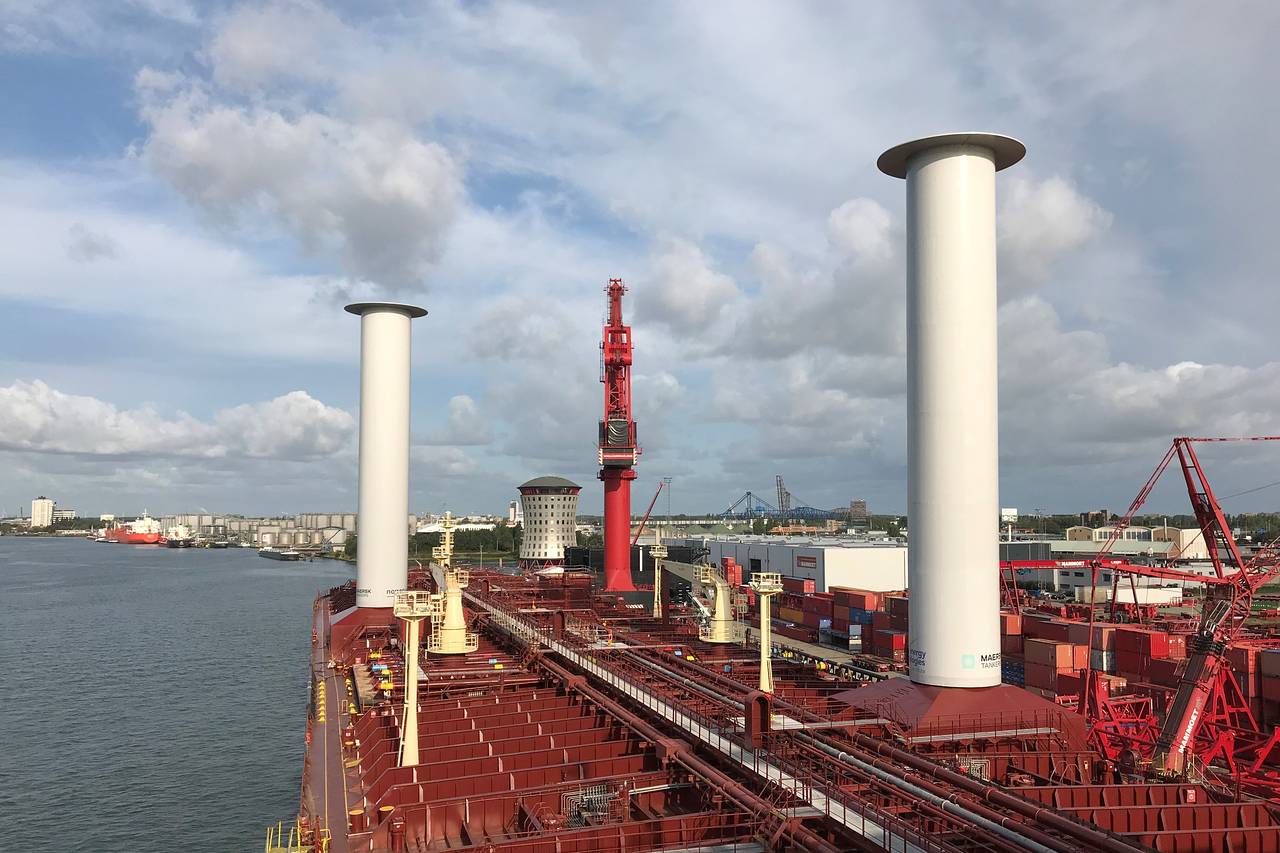
- 2 August, 2016
Maersk Tanker Tests Wind Power to Cut Soaring Fuel Costs
Marine fuel prices are soaring and the shipping industry is looking for ways to harness ocean winds to power oceangoing vessels.
Danish giant Maersk Tankers said Thursday it has installed 100-foot-tall rotating cylinders on one of its product tankers, adding devices that are effectively high-tech sails that could cut the vessel’s fuel bill by up to 10%. If the system proves out during testing, Maersk could use the technology on dozens of ships in its 164-tanker fleet.
The operation is the latest attempt to bring together modern oceangoing vessels with maritime’s oldest and most basic technology—sails that harness wind power.
In the 1980s, French ocean explorer Jacques-Yves Cousteau commissioned the Alcyone, a vessel named after the daughter of the wind in Greek mythology, which used turbo-sails that provided thrust in the direction of travel along with the engines.
Shipping executives said previous efforts didn’t catch on with operators because either the costs of such technologies were too high or tests didn’t yield the expected fuel savings. But modern, lightweight and relatively cheap rotating sails show more promise, they said.
The cylinders on the Maersk tanker are made with composite materials by Finland-based Norsepower Oy Ltd., and cost €1 million to €2 million ($1.2 million to $2.3 million) to fit on a vessel, depending on the size of the ship.
The technology is based on what is known as the Magnus effect, in which a spinning object drags air faster around one side, creating a difference in pressure that pushes the vessel in the direction of the lower-pressure side.
A.P. Moeller-Maersk AMKBY 1.23% A/S, the umbrella group that includes container shipping giant Maersk Line, sold Maersk Tankers to its controlling shareholder Maersk Holding last year.
Maersk Tankers didn’t disclose its annual energy bill. Maersk Line spent around $3.4 billion on fuel last year for its fleet of around 800 vessels. The carrier expects its annual cost to increase by roughly $2 billion in 2020, when it starts using cleaner fuels to comply with stricter environmental rules. Marine fuel prices generally have increased about 30% this year from a year ago.
“We have been taking incremental steps to cut our energy bill for the past 15 years, but this could prove a game changer,” said Tommy Thomassen, Maersk Tankers’ chief technical officer. “Fuel makes up approximately 60% of our total cost and this technology has a significant potential to cut fuel consumption by 7% to 10% on the ships that it will be installed."
Mr. Thomassen said tests so far are promising, and if the savings are proven during the trial runs with the Maersk Pelican tanker, the spinning cylinders could be installed on about 80 of its large and medium-size product tankers.
The Pelican will sail in the next few days.
The sails have been used since 2014 on a ferry operated by Dutch shipping firm Bore Ltd. and were installed on a Viking Line cruise ship in April.
Bore Vice President Jorgen Mansnerus has said the results were better than expected.
“There is a high interest in this technology,” said Tuomas Riski, Norsepower’s chief executive. “As the [technology] gets better, the cost will fall and there is the potential to make the rotor sails a standard feature for certain types of ships like tankers or dry bulk carriers.”
The Maersk project is a joint venture with Norsepower, Royal Dutch Shell and the U.K.’s Energy Technologies Institute, an industry group focused on alternative-fuel use.
Other shipping operators are also looking for ways to cut fuel costs.
Food and commodities giant Cargill Inc., for instance, has equipped one chartered dry bulk carrier with a 3,444-square-foot kite made of artificial fibers to harness wind power.
Maersk Line and Maersk Tankers also have started using special paints on ship hulls to cut down on algae and other microorganisms that increase drag.
sources: https://www.wsj.com/articles/maersk-tankers-turns-to-wind-power-to-cut-soaring-fuel-costs-1535641239?mod=djemlogistics_h
Our Tought